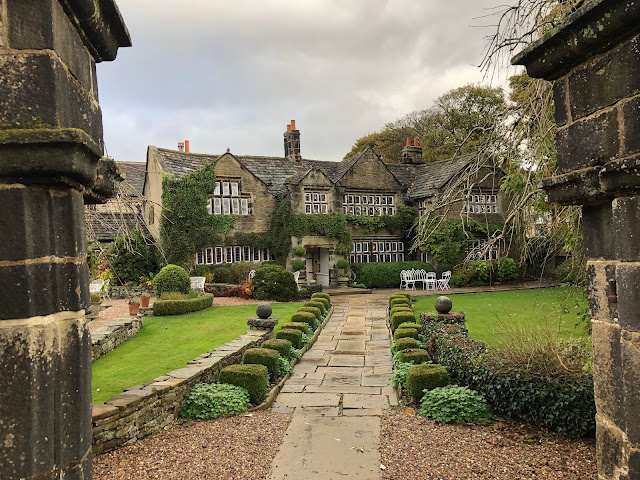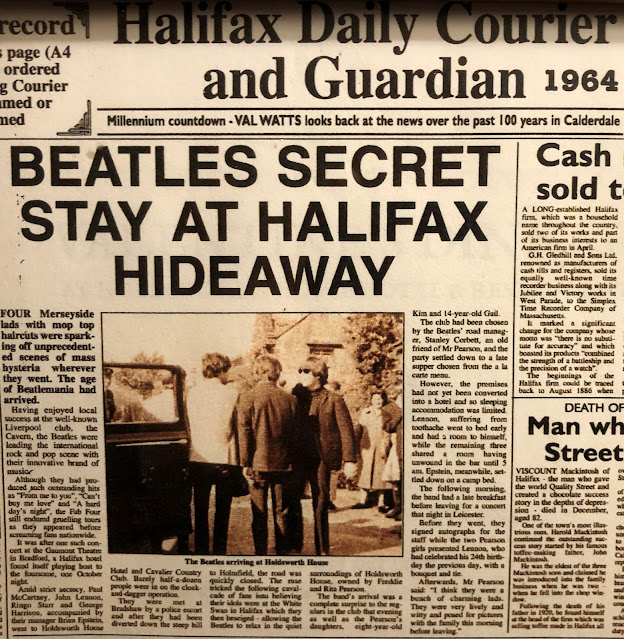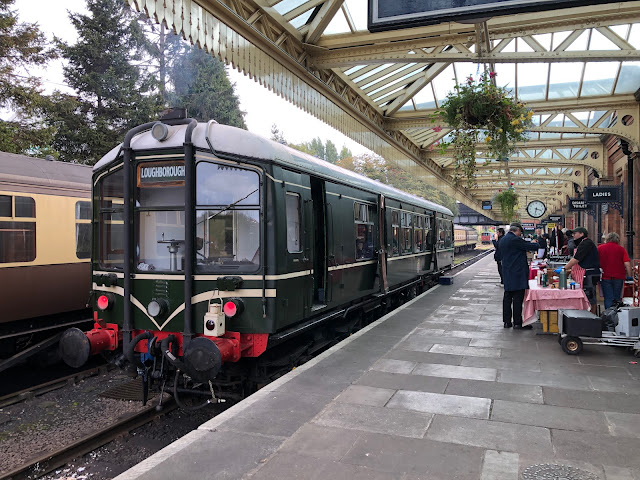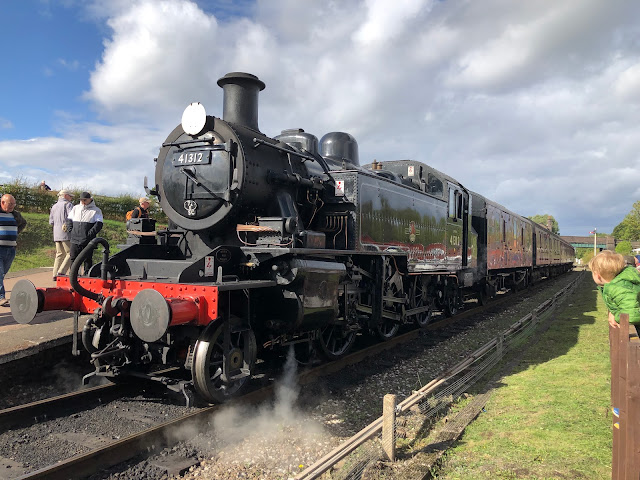The station buildings at Hebden Bridge on the Calder Valley route between Leeds and Manchester date from a rebuild in 1893. In 1997, another refurbishment restored Lancashire and Yorkshire Railway-style signage, which is very prominent in the pictures taken last week, as a lunchtime Leeds-bound Northern service was sent on its way from platform two.
Hebden Bridge is an attractive riverside town built of local
stone. The compact central area, including cobbled streets and marketplace, is
largely given over to tourism these days, with gift shops and plenty of cafes
to choose from. The town also has a growing reputation as a regional art
centre. To the north and a few miles out of town is Hardcastle Crags, a popular
local walk up a stony riverside path to a former cotton mill, built c. 1800,
and known as Gibson Mill. It has been with the National Trust since 1950. A
café occupies the former weaving shed. A short extension to our walk led to the
top of Hardcastle Crags, themselves, with panoramic views across the attractive
hilly surroundings.
This part of West Yorkshire is fascinating, historically, but
I wouldn’t describe it as pretty, overall. When it is overcast, the soot-blackened
older buildings that have not received their post-smoky industrial era clean-up
can make the area look gaunt, gritty and even quite forbidding, at times. On
the other hand, looking down from the tops – and it is very up and down up here
– in bright sunlight, it has a rather magnetic appeal. Calderdale is now more
widely known through the BBC’s Happy Valley series of TV dramas. There are former
industrial and residential gems everywhere - reminders of the centuries old woollen
industry that made this region rich way before the industrial revolution. The
Bankfield Museum at Halifax, former home of the Akroyd family woollen mill
owners, is just one example.
Old villages have merged into larger towns wherever there was enough flat land to build on. Historic properties now rub shoulders with modern estates and factory units. This is the homeland of my dad’s family. Priestleys were big landowners here for centuries. There is currently one glaring gap in our direct ancestry lineage, but the feeling is that if an uncomfortable truth had to be buried in the early eighteenth century, when most of the people directly affected could not read or write, then the chances of uncovering any relevant facts about it three hundred years later are not that likely. There is no harm in trying, though.






























